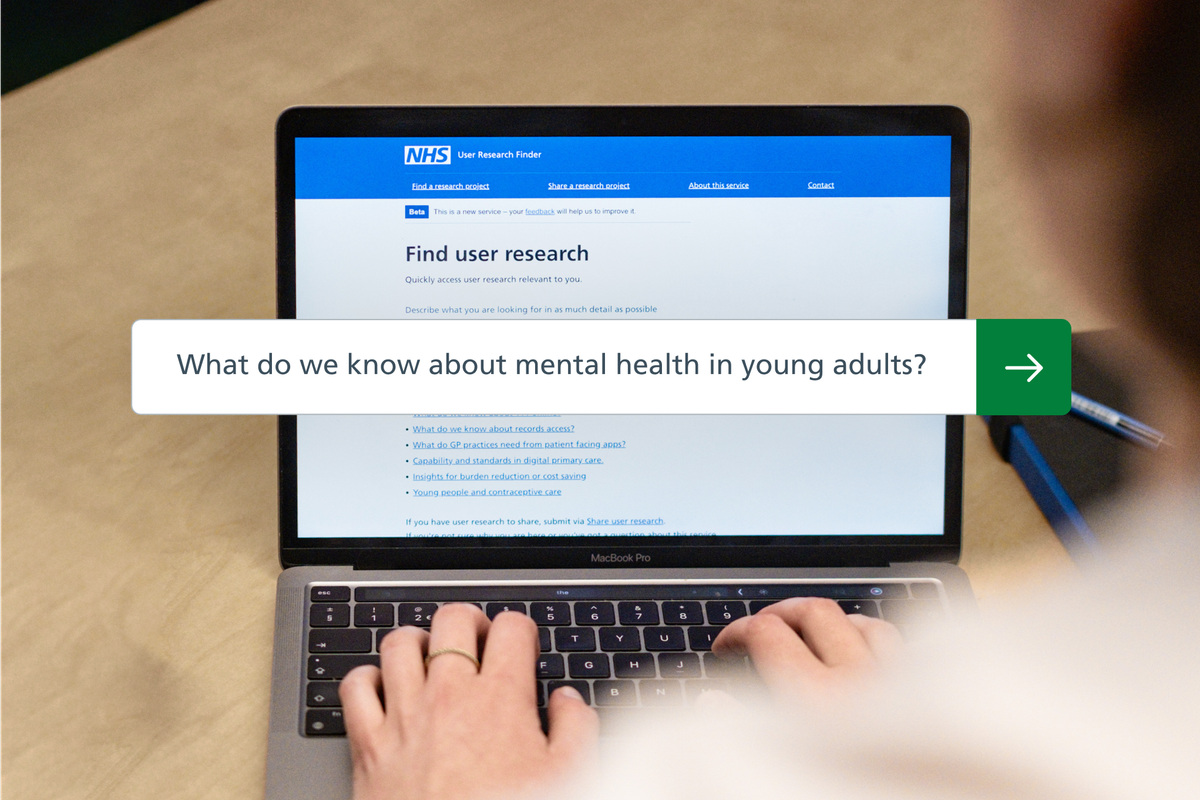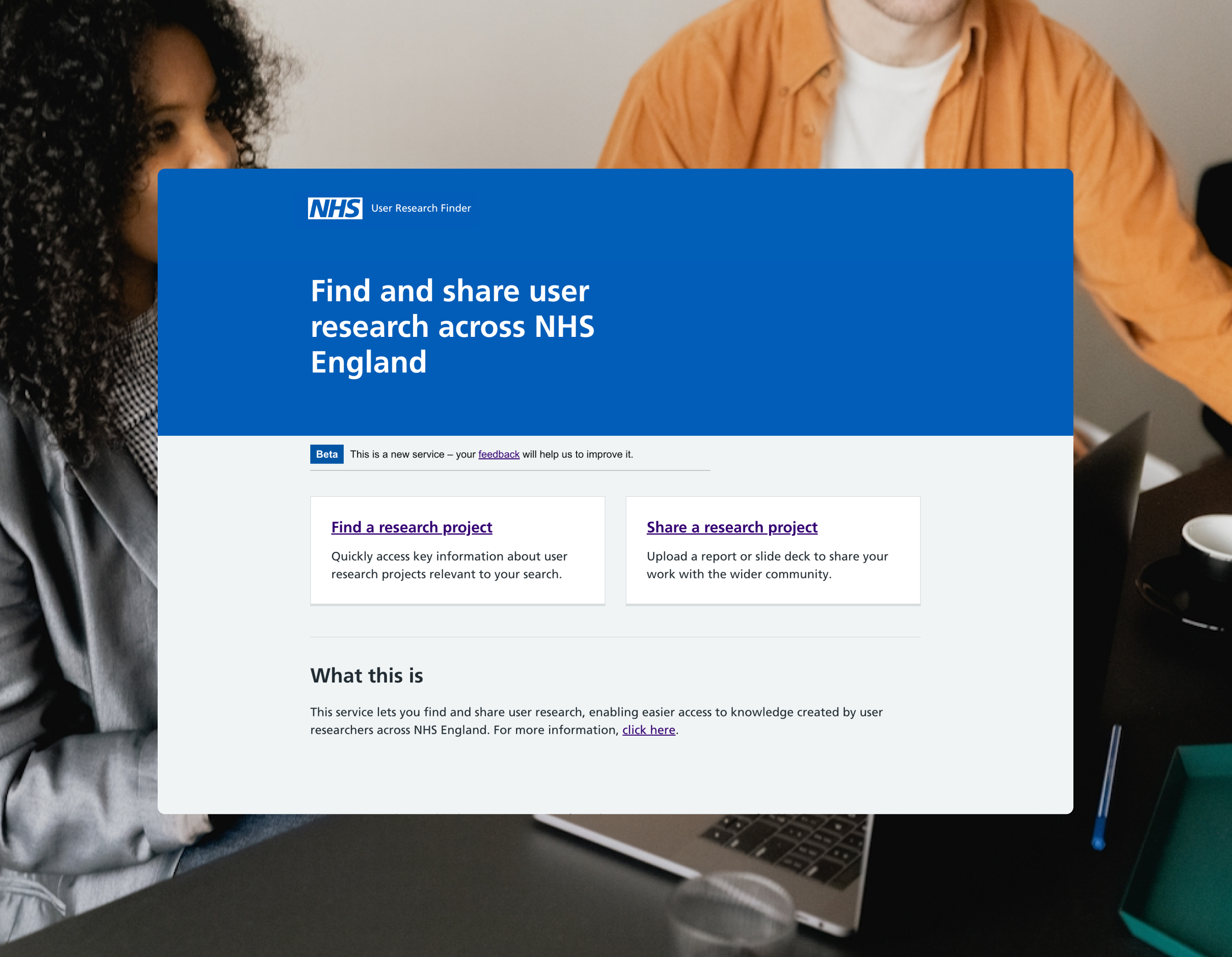Parallel Discovery and Alpha: New Approach for the AI Era
Written by • • 4 min read
In today's rapidly evolving technological landscape, the integration of Artificial Intelligence (AI) is reshaping how we approach problem-solving and innovation. At Normally, we've developed a parallel discovery and alpha approach to meet the unique challenges of AI products.
Kate Stulberg, Lead User Researcher at the Ministry of Justice, recently wrote this article about the integration of Artificial Intelligence (AI) into User-Centred Design (UCD), and what it means for how we approach problem-solving and innovation. Our recent collaboration with NHS England on their Research Finder service is a great example of this approach in action. We helped NHS England design and deploy an AI-powered research sharing system in just 12 weeks.
The Challenge: Sharing Knowledge in large organisations
NHS England approached us with a significant challenge: design, develop and pilot a system to share research effectively across their organisation, all within 12 weeks. Previous attempts at developing research repositories had struggled, largely due to the high time investment required to maintain repositories and the limitations of keyword search for discovery of relevant research.
From other Normally work, we knew the Large Language Model (LLM) enabled natural language search might be able to solve the latter issue. However, at the start of the project we weren’t sure of the feasibility of implementing an AI-enabled system into the NHS in such a short timeframe, so it remained a hypothesis we wanted to test for efficacy and feasibility.
This project needed an approach that would allow us to explore the potential power of emerging AI capabilities, while ensuring we truly understood and addressed the researchers’ and the organisation’s needs.
Our Approach: Parallel Discovery and Alpha
To meet this challenge, we used a parallel approach with two simultaneous workstreams:
Discovery Stream: This half of the team focused on understanding the problem space in depth, engaging with a range of NHS users and stakeholders to uncover the nuances of the challenge.
Alpha Stream: Meanwhile, the other half explored technological possibilities, creating proofs of concept and testing the potential of various AI capabilities.
Importantly, these streams were not siloed. They were one team in constant communication, each informing and shaping the other's work. This iterative dialogue between discovery and alpha was essential to the success of the project.
How Prototyping Revealed Latent Needs
Initially, we approached the project with the idea of creating a traditional repository that would catalogue research reports and make them searchable. However, our technology exploration revealed new possibilities that changed our understanding of user needs. We discovered that AI could effectively summarise high-level overviews of research.
We could quite easily create a 'front page' for each piece of research, pulling out a summary and the most important key bits of data from a PDF report or PowerPoint presentation. Through our discovery interviews, we understood that this would by valued by an audience who needed just the top-line information.
This audience, mostly senior leaders in the NHS, includes people who might commission research, plan work to be done, or talk to policymakers, and need to have research available at their fingertips to support decision-making. The Research Finder became valuable not just for researchers who could refer to previous findings, but for these senior leaders who could use it to make more informed decisions.
This insight fundamentally shifted our understanding of the problem we were solving. We moved from thinking about a detailed repository for researchers, to a service that could provide valuable, high-level research insights to a much wider audience within the NHS. With researchers as inputters, but not necessarily the primary consumers of the service, we had to focus on making the inputting journey as quick and easy as possible.
How Discovery Influenced Prototyping
Our deep dive into the organisational context of the NHS revealed critical insights that directly shaped the product. One key discovery was the importance of researchers' responsibility for uploaded content. Sam Martin, Senior Product Manager from the NHS team, emphasised that safeguarding personal data was a top priority. This led to the development of our 'researcher-in-the-loop' approach for the Research Finder.
Instead of creating a system where AI directly generates and uploads summaries, we designed a process where:
- The system uses AI (LLM) to generate an initial summary of the uploaded research report.
- The system presents this summary to the researcher in edit mode.
- The researcher can review, edit, and refine the AI-generated text.
- Only after the researcher signs off on the content it gets published.
This approach ensures that while we leverage AI to save time and provide draft summaries, the researchers maintain control and responsibility over the final content.
Outcomes and Impact
The parallel discovery and alpha approach allowed us to create the Research Finder within a tight 12-week deadline. The tool leverages Large Language Models (LLMs) and Vector Databases to make research more discoverable and provide search results with rich context. Crucially, it maintains the human common sense, empathic intelligence, and years of experience of researchers at NHS England in the workflow.
The tool has seen significant adoption, with nearly 10,000 views and 110 report uploads in the first month alone. More importantly, it's changing how research is shared and utilised across NHS England, potentially saving costs by reducing duplicate research efforts and ensuring existing insights are leveraged to their full potential.
Conclusion
The NHS Research Finder project demonstrates the power of parallel discovery and alpha in the AI era. By maintaining a constant dialogue between deep discovery and technological exploration, we were able to create a solution that not only leveraged advanced technology but truly addressed the needs of NHS England as an organisation.
For organisations looking to integrate AI into their processes, consider how a parallel approach might help you balance emerging technological capabilities with real user needs. Everything has changed and nothing has changed – by embracing approaches like parallel discovery and alpha, we can ensure that AI-powered solutions remain truly centred on user needs and organisational realities.

